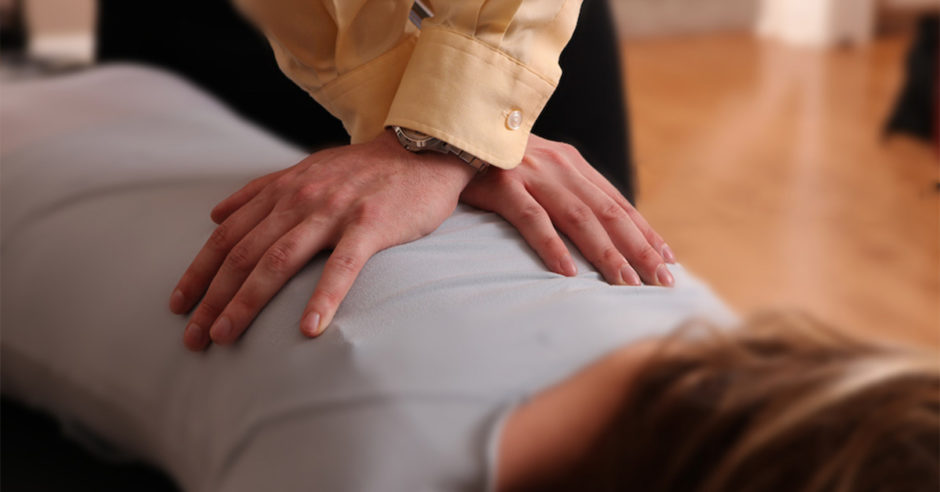Many clinicians ask us: What is the difference between Class 3 and Class 4 Lasers? There is a slew of false information in the public domain, perpetuated mainly by the manufacturers of these devices, regarding the effectiveness and cellular mechanisms activated during class 4 laser light irradiation. Many class 4 laser manufacturers are intentionally or unintentionally misleading healthcare practitioners into believing that higher power and longer NIR wavelengths equate to deeper tissue penetration and better clinical efficacy. Nothing could be further from the truth. The truth is… Unfortunately, all of these claims turn out to be fancy sales gimmicks, as they have not the standing in the clinical or scientific journals to support their claims. The clinical and scientific facts are clear that because of the very high absorption of NIR laser light by water at wavelengths greater than 950 nm, 99% of the energy produced at this wavelength or … Read More
What is Cold Laser Therapy?
History Cold Laser Therapy (“CLT”) or treatment with light has been in existence since 1500 BC; where, Indian medical literature described a treatment combining herbs with natural sunlight to treat non-pigmented skin areas, known today as vitiligo. Buddhist literature from 200 AD and 10th century Chinese documents make similar references.1 As an analogy, just like the abacus eventually evolved into the computer, which has fundamentally changed the way humans live and work in today’s society (put up your hand if you can go a day without your smartphone), light therapy, using research from 3500 years ago, has evolved into CLT systems capable of delivering laser light at specific wavelengths (colours) and power levels to heal numerous nerve, muscle and joint conditions. Benefits As advancements in CLT technology have continued, millions of healthcare practitioners now rely on CLT systems daily in their clinics to treat a wide variety of conditions by: … Read More
Dealing with a Pain in the Neck
Neck pain is a very common complaint and with good reason. Our necks contain many pain-sensitive structures which are delicate and constantly exposed to abnormal stress.
Becoming a “Go-To” Chiropractor: Tips to Explode Your Practice
The Canadian Chiropractic Association has stated their vision that by 2023 “Chiropractors will be an integral part of every Canadian’s healthcare team.” Chiropractors are well-positioned to be viewed as the cutting-edge health and wellness experts for neuro-musculoskeletal conditions.
FDA Findings Reinforce Need for Drug-Free Pain Management
Recent warnings from the U.S. Food and Drug Administration (FDA) have many patients and practitioners alike rethinking their approach to chronic pain management.
Plantar Fasciitis: Pain You Can’t Outrun
Plantar fasciitis is a painful disorder that affects the heel and the bottom of the foot. The condition occurs within a thick band of tissue which runs from the heel bone to the toes, the plantar fascia. Several studies into plantar fasciitis report evidence of local inflammatory changes which may contribute to the condition.1,2,3 The condition is also referred to as Jogger’s Heel because of its frequency among runners. In fact, the disorder is estimated to account for 8% of all running-related injuries.4 Plantar fasciitis is the most commonly reported cause of chronic pain beneath the heel5, and typically manifests as a sharp, stabbing pain in the bottom of the foot. Pain is normally reported as worse in the morning, but can also be triggered by long periods of standing or activity. Traditional treatments include physiotherapy and may involve the use of night splints or orthotics. In advanced cases patients … Read More
Back Pain: Ending the Viscous Cycle
Back pain is among the most common of chronic conditions, with as many as 1 in 8 Canadians reporting that they have a chronic back problem.1 The condition’s influence reaches beyond simple pain, affecting patient mobility with 31% of Canadians reporting activity limitations due to back pain.2 The economy is also unduly affected; 15% of low back pain sufferers are absent for work for over a month.3 No matter what type of pain causes the discomfort, over time chronic back pain can cause patients to limit their interactions with others to avoid discomfort or embarrassment. This can bring on depressed emotional states, as anxiety, fear, anger, fatigue and stress all combine in the body to work against the body’s natural painkillers, creating a vicious cycle of pain. Today we have no shortage of pharmaceutical options for dealing with chronic pain. However, pain medication can bring a number of unpleasant side … Read More
Growing Your Practice with Laser Therapy
A growing number of healthcare practitioners are utilizing non-thermal laser therapy to bring clinically-proven benefits to their patients including promoting wound healing1, reducing inflammation2, and reducing pain3 right at the source. But did you know that laser treatments also provide an ideal opportunity to grow your practice and increase your revenue? In 2013, Theralase conducted a North American survey of practitioners using laser therapy on their patients. On average, most practitioners charge $50.00 per treatment and see anywhere from 100 to 400 patients per month. With a median of 200 patients per month, this translates into $10,000 in additional revenue for their practices each and every month. A growing number of private insurance plans also cover laser therapy when administered by a healthcare professional. Not only are laser treatments effective, they can be completed in only 10 minutes, making them ideal as additions to your existing patient treatment plans. Another … Read More
Treating Chronic Pain with Laser Therapy
Canadians are said to be suffering through a chronic pain epidemic. Pain is a major concern for seniors, many of whom are already coping with health problems associated with age including cognitive issues, a decline in mobility, and other chronic conditions. Approximately 27% of seniors living at home and 38% of seniors in health care institutions suffer some form of chronic pain.1 Pain is an issue which transcends age, not only affecting older Canadians. A Canadian Community Health Survey found that around 1 in 10 Canadians aged 12 to 44 – approximately 1.5 million people – experience some form of chronic pain.2 There are three main types of pain, classified based on where it originates: Somatic pain is caused when receptors in the body surface or musculoskeletal tissues are activated. Pain usually takes the form of a dull ache and is often exacerbated by activity Neuropathic pain originates in the … Read More
Benefits of Light Therapy
Light Therapy can: Increase vascularity (circulation) by increasing the formation of new capillaries, which are additional blood vessels that replace damaged ones. New capillaries speed up the healing process by carrying more oxygen as well as more nutrients needed for healing and they can also carry more waste products away. Stimulate the production of collagen. Collagen is the most common protein found in the body. Collagen is the essential protein used to repair damaged tissue and to replace old tissue. It is the substance that holds cells together and has a high degree of elasticity. By increasing collagen production less scar tissue is formed at the damaged site. Stimulate the release of adenosine triphosphate (ATP). ATP is the major carrier of energy to all cells. Increases in ATP allow cells to accept nutrients faster and get rid of waste products faster by increasing the energy level in the cell. All … Read More
- Page 1 of 2
- 1
- 2


